Events and Attractions
- Attractions
- Events and Festivals
Arakkal Museum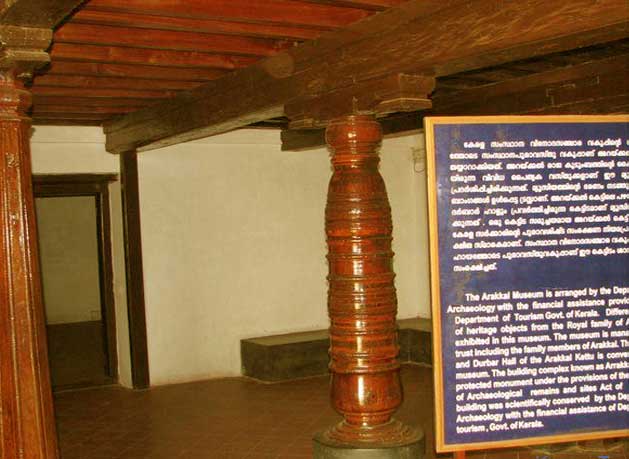
(3 kms from Kannur) - It is situated close to Kannur town. This was the palace of the old Arakkal Kingdom, the only Muslim royal family in Kerala. Now it is... More |
Bekal Fort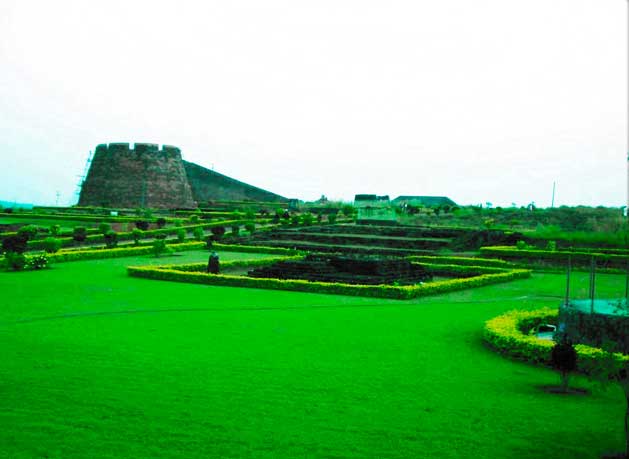
(85 kms from Kannur) – Bekal is the most well preserved fort in Kerala. It is located in Kasargod district. The fort, a circular imposing structure of laterite rising 130 ft. above... More |
Dharmadam Island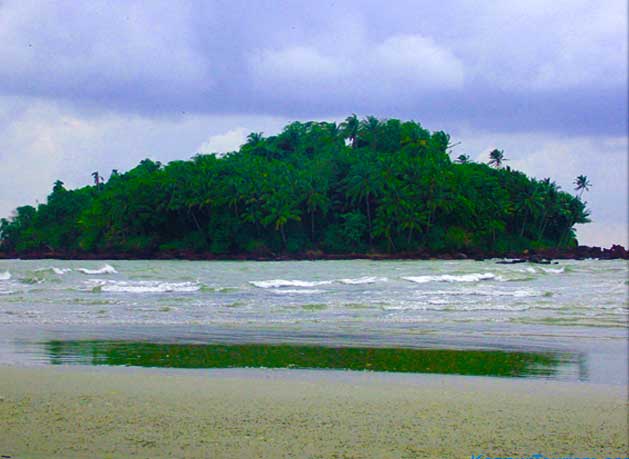
(17 kms from Kannur) – The small 5 acre island covered with coconut palms and dense bushes is a beautiful sight from the beach. It is close to Muzhappilangad beach. During low... More |
Ezhimala Hill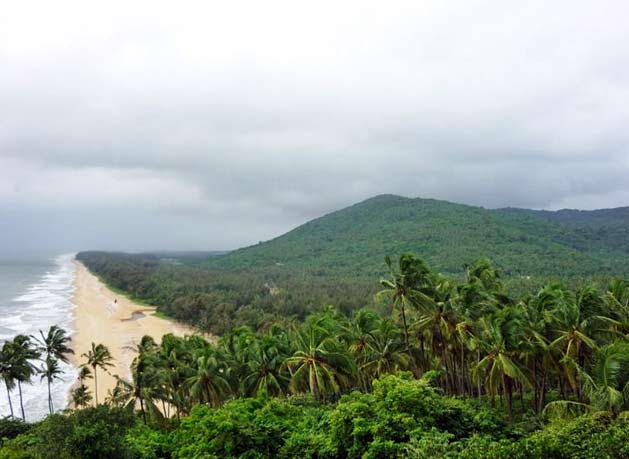
(55 kms from Kannur) – A 286 m high promontory extending itself into the Arabian Sea with beautiful beach nearby. A naval academy is located here. Permission is needed to enter... More |
Kerala Folklore Academy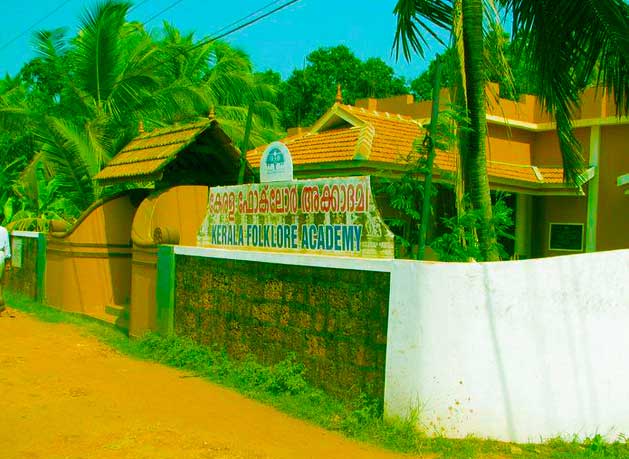
(6.5 kms from Kannur) – Located at chirakkal is the head quarters of Kerala Folklore Academy... More |
Madayi Para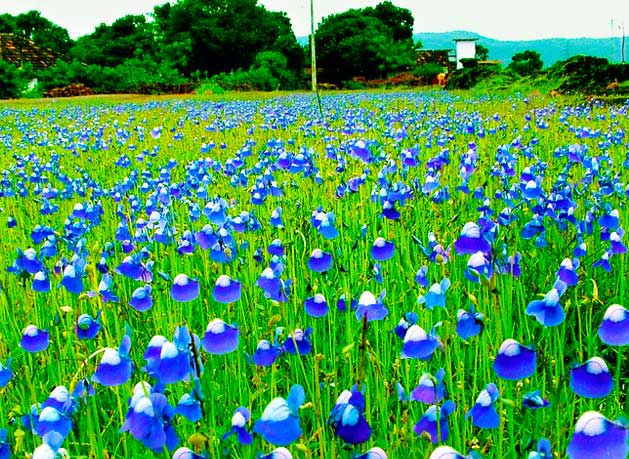
(25 kms from Kannur) – It is a beautiful spot of historical and religious importance. There are ... More |
Muzhapilangad Drive-in-Beach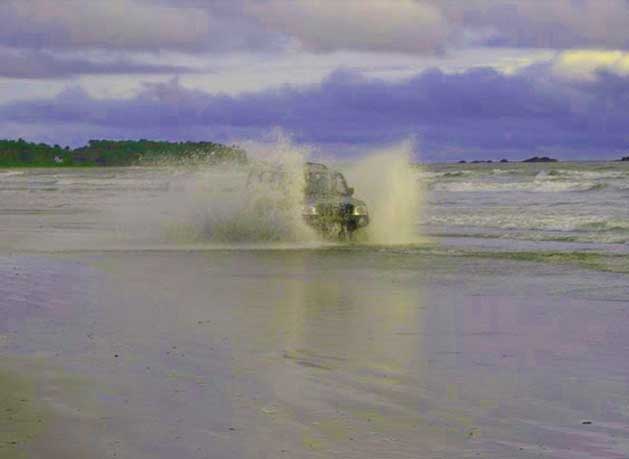
(15 kms from Kannur) – It is the only drive-in-beach in India. One can drive the entire 4kms ... More |
Payyambalam Beach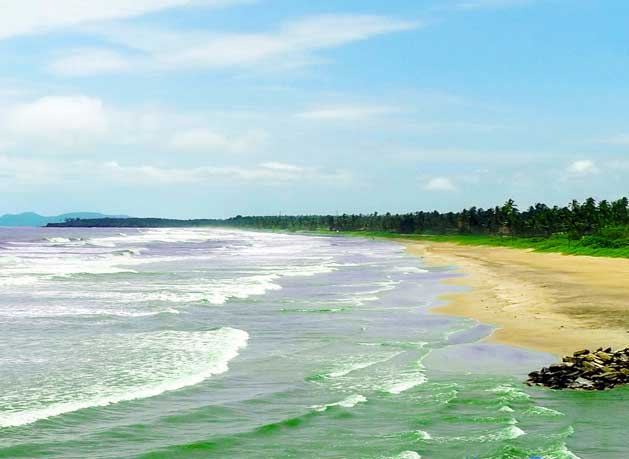
(2 kms from Kannur) – A beautiful beach near to Kannur which is an excellent spot to spend your evening... More |
Pythal Mala/Vaithal Mala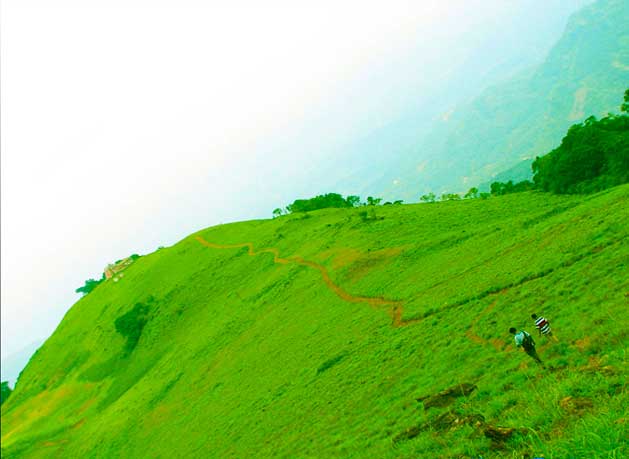
(65 kms from Kannur) – An enchanting hill station in Kannur district. It is situated 4500 ft above sea level near the Kerala-Karnataka border... More |
Thalassery Fort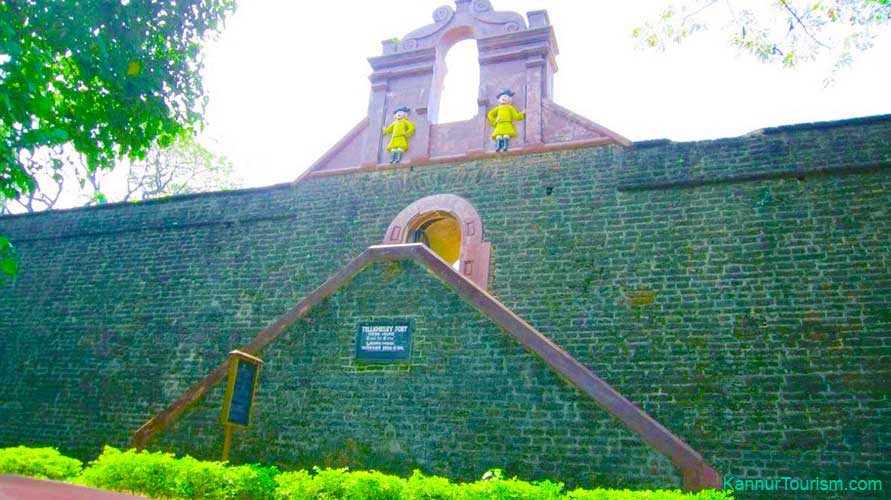
(21 kms from Kannur) – It was constructed in 1708 AD, when the British East India Company established its settlement on the Malabar Coast, ... More |
Aralam Wildlife Sanctuary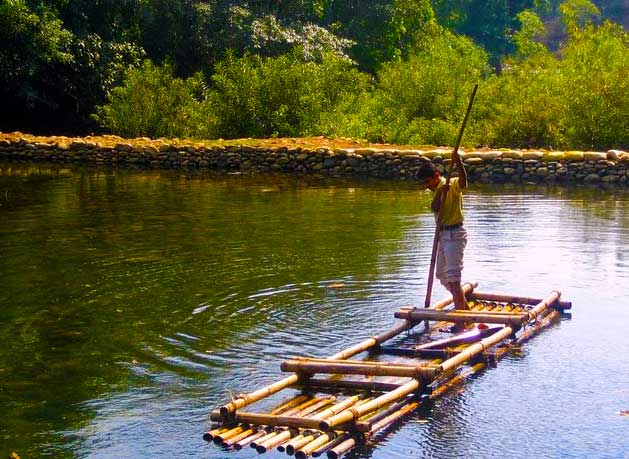
(65 kms from Kannur) – Aralam wildlife sanctuary is the northernmost protected area of Kerala state, situated in the southeast part of Kannur District... More |
Kannur Fort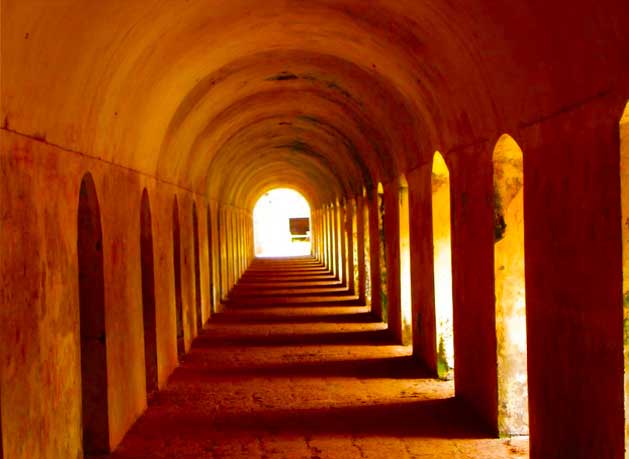
(2 kms from Kannur) – Constructed by the first Portuguese Viceroy, Don Francesco de Almeida in 1505, St. Angelo's Fort today is a protected monument ... More |
Parassinikkadavu Temple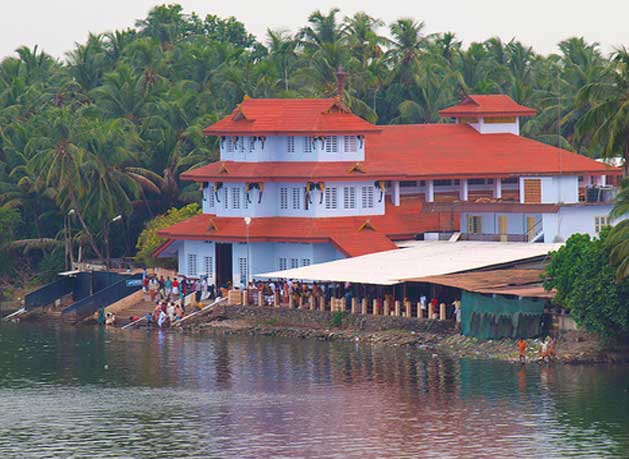
(16 kms from Kannur) – Parassinikadavu is famous for its Sree Muthappan Temple. The Temple stands on the banks of the Valapattanam River. This pilgrim centre is famous for... More |
Meenkunnu Beach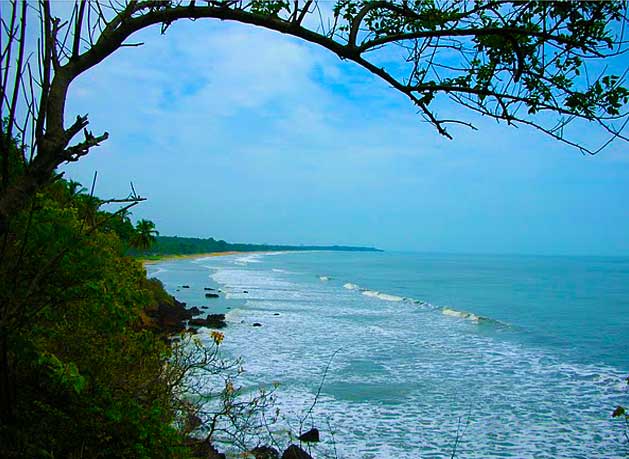
(10 kms from Kannur) – A serene beach with golden sands comes as an extension of payyambalam beach towards north. This peaceful uncrowded beach is situated at Azhikode... More |
||
Temple festivals season in Kerala

( jan-apr is the best season to be in the city, or for that matter, in any part of Kerala. For it is the season for temple festivals across the state. )
During this season when each of the temples compete against each other, albeit unofficially, to organise the most extravagant of festivals. Traditional dance performances, music concerts, loads of colourful exhibits, well-decorated majestic elephants and loads and loads of people are what to expect here.
Thefinale
The most grand temple festival in all of Kerala, held at the Vadakkunathan temple at Thrissur, attracts devotees and tourists from across the world. Watch out for the elephant procession, music concerts, ornamental parasol displays, and all night fireworks.
The season of rejuvenation - Karkidakam

Karkidakam is the last month of the Malayalam calendar (followed in Kerala), which falls during the month of July or August. With the coming of Karkidakam the monsoon rainfall enters its final phase in Kerala. Traditionally in Kerala, this period of the year is considered most ideal for undergoing Ayurveda based body rejuvenation therapies.
The body is considered highly receptive to Ayurveda treatments during this period. There are various types of Ayurveda therapies that people undergo during the Malayalam month of Karkidakam. And these therapies help an individual to go through the rest of the year by having a recharged and energized body and mind.
Theyyam

Theyyam is a form of worship where man dons the guise of God and propitiates the Gods through possessed dancing; Theyyam is also known by the name Kaliyaattom. The performance of Theyyam is supposed to make life prosperous and remove all hazards.
Theyyam is perhaps the most significant ritualistic art form of Kerala – God’s Own Country. Theyyam has its etymological origin from Daivam, i.e., god in vernacular. Theyyam is performed in mainly in the North Malabar districts of Kannur and Kasargod in Kerala State, India. Though Thira prevalent in Malappuram and Kozhikode districts and Bhootham of South Canara region and Kasargod district have similarities with Theyyam, when one goes into the details, it will be seen that they are very different from each other.
The staging area of Theyyam is known as kaavu. Kazhakam, Muchilottu, Mundiya, Sthhaanam, Kottam, are the other names for the staging area. Theyyam is also performed at home and fields by erecting temporary pathi as the staging area.
Vishnumoorthy, Puthiyabhagawathi, Pottan, Kathivanoor Veeran, Gulikan, Rakthachaamunnddi, Madayilchaamunnddi, Vayanaattu Kulavan, Kutty Shaashsthan, are the popular Theyyam forms. It is estimated that there are about 450 Theyyam forms. Theyyam is performed between the 10th day of Thulam (Malayalam month corresponding to mid-October /mid-November) and middle of Idavam (Malayalam month corresponding to mid-May/mid-June). This is the period between the completion of the year’s harvest and preparations for the next year’s harvest. This period for Theyyam is the time for prayers for a good harvest, prosperity and general social solidity. The headgear and other ornaments that are clad on the performers body are huge in size and appearance. Different costumes like leaf dress, headdress, breastplates, bangles, arm ornaments and other body decorations are to be prepared in advance before the performance.
Festivals

Kerala, God’s own country is noted for its communal concord, rich culture and heritage. The synthesis of the varied culture took place due to Kerala’s interaction with the native as well as foreign cultures. Kerala’s trade contacts in its past with the foreign countries also led to the introduction of world religions like Christianity, Judaism and Islam.
An appropriate instance of the religious tolerance or secularism is found in Kerala's capital, 'Thiruvananthapuram', where a Hindu temple, a mosque and a church stand adjacently.
This diverse culture of the state has resulted in a colorful mishmash of festivals and fairs. The festivities that continue throughout the year make Kerala more vivacious than any other tourist destination around the world. The spirit of gaiety and jubilation always pervades the ambience of Kerala. Thus Kerala is also known as the land of fairs and festivities.
The major religions of Kerala are Hinduism, Islam and Christianity. However there is a minority population which belongs to Jainism, Buddhism and Judaism . The festivals of Kerala are-
CHRISTIAN FESTIVALS

Christmas - Christmas, celebrated throughout the world as the birthday of the Saviour Jesus Christ, is the festival of universal love. Christianity is no more the religion of the foreigners. It has intermingled with the spirit and culture of Kerala of secular India and has become the very own religion of many Keralites. Now a large number of affluent Christian Communities live in Kerala. So Christmas is celebrated in Kerala with great pomp and vigor. By celebrating the solemn festival of Christmas, the message of unconditional love, brotherhood and compassion is circulated everywhere.
Easter - Easter, the oldest festival of the Christians is celebrated to commemorate the most important tenet of Christianity-The Resurrection of Jesus Christ (the rising of Christ on the third day after the Crucifixion). Easter is celebrated in Kerala with the same zeal and staidness as it is celebrated all over the world. The merry mood sweeps across the entire state where Christians consist of 23 percent of the state's 32 million population. Easter in Kerala is marked by four distinct periods commencing with Lent- the 40 preparatory days of fasting and penance for the Resurrection of Christ. Then the Holy Week consisting of Thursday, Friday, Saturday and Sunday follows. The third period is observed as the Octave of Easter (the period of traditional Baptism) and finally Easter or the paschal season that extends over 40 days more. Hallelujah is the merry word of Easter wish.
MUSLIM FESTIVALS

Bakrid - Id-ul-Zuha, Idul-Adha or Bakrid, the festival of sacrifice is observed by Muslims all over India as well as the world. This festival is celebrated to memorialize the sacrifice of Hazrat Ibrahim, who voluntarily killed his son at God’s command. To celebrate this event, Muslims sacrifice one animal, e.g. a bakr or goat for each family or a group of families. The sacrifice is followed by prayers at mosques, grand feasts and merry-making. The Muslims wear new garments, visit each other’s places and exchange good wishes.
The dawn of Bakrid in Kerala and other parts of the world reverberates with the sound of Thakhbeer (Allahu Akbar), asserting that the God is great. In Kerala, Bakrid is celebrated particularly as the occasion for confluence of the notable members of sister communities.
Ramadan - Ramadan is observed in the ninth month of the lunar year and is an important festival of the Muslims. Actually Ramadan is the ninth month in the Islamic Calendar Year; when the "Holy Koran or Quran" was send as a counsel from heaven by Allah or God for the well being of mortals in 615 AD. The festival of Ramdan gained its name from this month of Ramdan. All over the world, the Muslims observe the Ramadan month by fasting rigorously to attain purification of the soul and body and to become more close to the divine being-God. This religious rite of fasting during Ramadan is known as "Sawm". This entire period is marked by earnest prayers and worship of God. This period of conventional fasting ends when the crescent moon on the western horizon is visible. The end of Ramdan marks the beginning of Id-Ul-Fitr (Feast of Fast-Breaking) which is celebrated for 3 days.
HINDU FESTIVALS

Onam - Onam or Thiruvonam, the harvest and national festival of Kerala is celebrated annually in the first Malayalam month of Chingom (August-September) in an outstanding manner for ten days.Onam festival is basically the harvest fiesta of the Malayalees and is mythically related to the Malayalee-Hindu legends.
Onam symbolizes the vitality and exuberance of the spring season. It is observed with conventional fervidness by arranging colorful blossoms for pookalam, visiting temples, gifting new clothes (Onakkodi) to everybody, feasting on 'avial', 'pappadum' and 'payasams' on plantain leaves and indulging in elating boat races such as Vallomkali in the azure backwaters, sports and other cultural activities like Pulikkali (meaning tiger dance),`Oonjalattom, Thiruvathirakali and so on. Onam is the most colourful and the chief festival of Kerala which is celebrated by almost all people irrespective of caste and creed and community. The origin of Onam can be traced back to an interesting and unusual legend of an asura named Mahabali
Vishu - Vishu is one of the most important Hindu Festivals that is celebrated in Kerala and other adjacent regions of Tamil Nadu on the first day of the Malayalum month of Medam (April-May). But Vishu is the only festival that is not linked with any religion but is celebrated with great religious solemness. Vishu is considered as the beginning of the New Year by the Keralites. They commonly believe that the fortunes of the forthcoming year depend on the object first seen by them in the morning of Vishu day. Thus the most significant rite related to Vishu is the Kani Kanal, literary meaning ‘the first sight’.
Another significant event of this Vishu is the Vishu Kaineettam, which implies gifting of money to the children and junior members of the family. After observing these ceremonial rites, the people then spend the day by rejoicing and bursting crackers. All the members of the family together have a grand Vishu feast known as 'sadya'.
Deepavali - The term Deepavali or Diwali means "a row of lights" in Sanskrit and is celebrated as the festival of lights throughout India. In Kerala, Deepavali is observed on the preceding day of the New Moon in the Malayalam month of Thulam i.e. October-November. It is believed that Deepavali is the celebration of God Sree Krishna's triumph over the demon Narakasura . The Tamil communities start celebrating Deepavali right from the early morning by taking a ritual oil bath before sunrise. It is the common custom in South India to eat a preparation of jaggery and dry ginger immediately after taking the oil bath. The festivity starts by distributing special sweets bursting of crackers and a wide assortment of colorful fireworks. The houses are beautifully decorated with clay oil lamps and the city dazzles with these sparkling lights.
Navaratri - Navaratri literally meaning "nine nights" is one of the greatest Hindu festivals in India. During this period of nine days, the feminine divinity -Durga, Lakshmi and Saraswati are worshipped and revered as three different manifestations of cosmic energy i.e. Shakti. The celebration commences after the Mahalaya Amavasya and culminates with Vijaya Dasami or Dassara. On the tenth day of Navratri, also known as Dussehra, an effigy of Ravana is burnt and crackers are burst to celebrate the triumph of good (Rama) over evil.
Navaratri and Vijayadasami are celebrated with mouth watering sweets and crunchy snacks. Chundal, is one of the tasty snacks that is made on all of the ten days.



